Features
The problems of life

(from Venerable Nārada Mahāther’s THE BUDDHA AND HIS TEACHINGS)
Who? Whence? Whither? Why? What? are some important problems that affect all humanity.
1) Who is man? is our first question.
Let us proceed with what is self-evident and perceptible to all.
Man possesses a body which is seen either by our senses or by means of apparatus. This material body consists of forces and qualities which are in a state of constant flux.
Scientists find it difficult to define what matter is. Certain philosophers define “matter as that in which proceed the changes called motion, and motion as those changes which proceed in matter.”
The Pāli term for matter is Rūpa. It is explained as that which changes or disintegrates. That which manifests itself is also another explanation.
According to Buddhism there are four fundamental material elements. They are Pathavi, Āpo, Tejo, and Vāyo
Pathavi means the element of extension, the substratum of matter. Without it, objects cannot occupy space. The qualities of hardness and softness which are purely relative are two conditions of this element. This element of extension is present in earth, water, fire and air. For instance, the water above is supported by water below. It is this element of extension in conjunction with the element of motion (Vāyo) that produces the upward pressure. Heat or cold is the Tejo element, while fluidity is the Āpo element.
Āpo
is the element of cohesion. Unlike Pathavi it is intangible. It is this element which enables the scattered atoms of matter to cohere and thus gives us the idea of body.
Tejo
is the element of heat. Cold is also a form of Tejo. Both heat and cold are included in Tejo because they possess the power of maturing bodies, or, in other words, the vitalising energy. Preservation and decay are due to this element.
Vāyo
is the element of motion. The movements are caused by this element. Motion is regarded as the force or the generator of heat. Both motion and heat in the material realm correspond respectively to consciousness and Kamma in the mental.
These four powerful forces are inseparable and interrelated, but one element may preponderate over another, as, for instance, the element of extension preponderates in earth; cohesion, in water; heat, in fire; and motion, in air.
Thus, matter consists of forces and qualities which constantly change, not remaining the same even for two consecutive moments. According to Buddhism, matter endures only for 17 thought-moments. [2]
At the moment of birth, according to biology, man inherits from his parents an infinitesimally minute cell 30 millionth part of an inch across. “In the course of nine months this speck grows to a living bulk 15,000 million times greater than it was at outset. [3] This tiny chemico-physical cell is the physical foundation of man.
According to Buddhism sex is also determined at the moment of conception.
Combined with matter there is another important factor in this complex machinery of man. It is the mind. As such it pleases some learned writers to say that man is not Mind plus Body, but is a Mind-Body. Scientists declare that life emerges from matter and mind from life. But they do not give us a satisfactory explanation with regard to the development of the mind
Unlike the material body immaterial mind is invisible, but it could be sensed directly. An old couplet runs:-
“What is mind? No matter.What is matter? Never mind.”
We are aware of our thoughts and feelings and so forth by direct sensation, and we infer their existence in others by analogy.
There are several Pāli terms for mind. Mana, Citta, Vijgana the most noteworthy of them. Compare the Pāli root man, to think, with the English word man and the Pāli word Manussa which means he who has a developed consciousness.
In Buddhism no distinction is made between mind and consciousness. Both are used as synonymous terms. Mind may be defined as simply the awareness of an object since there is no agent or a soul that directs all activities. It consists of fleeting mental states which constantly arise and perish with lightning rapidity. “With birth for its source and death for its mouth it persistently flows on like a river receiving from the tributary streams of sense constant accretions to its flood.” Each momentary consciousness of this ever-changing life-stream, on passing away, transmits its whole energy, all the indelibly recorded impressions, to its successor. Every fresh consciousness therefore consists of the potentialities of its predecessors and something more. As all impressions are indelibly recorded in this ever-changing palimpsest-like mind, and as all potentialities are transmitted from life to life, irrespective of temporary physical disintegrations, reminiscence of past births or past incidents becomes a possibility. If memory depends solely on brain cells, it becomes an impossibility.
Like electricity mind is both a constructive and destructive powerful force. It is like a double-edged weapon that can equally be used either for good or evil. One single thought that arises in this invisible mind can even save or destroy the world. One such thought can either populate or depopulate a whole country. It is mind that creates one’s heaven. It is mind that creates one’s hell.
Ouspensky writes: “Concerning the latent energy contained in the phenomena of consciousness, i.e. in thoughts, feelings, desires, we discover that its potentiality is even more immeasurable, more boundless. From personal experience, from observation, from history, we know that ideas, feelings, desires, manifesting themselves, can liberate enormous quantities of energy, and create infinite series of phenomena. An idea can act for centuries and millennia and only grow and deepen, evoking ever new series of phenomena, liberating ever fresh energy. We know that thoughts continue to live and act when even the very name of the man who created them has been converted into a myth, like the names of the founders of ancient religions, the creators of the immortal poetical works of antiquity, heroes, leaders, and prophets. Their words are repeated by innumerable lips, their ideas are studied and commented upon.
“Undoubtedly each thought of a poet contains enormous potential force, like the power confined in a piece of coal or in a living cell, but infinitely more subtle, imponderable and potent. [4]”
Observe, for instance, the potential force that lies in the following significant words of the Buddha:
— Mano-pubbangāma dhammā ? mano – setthā – manomayā.Mind fore-runs deeds; mind is chief, and mind-made are they.
Mind or consciousness, according to Buddhism, arises at the very moment of conception, together with matter. Consciousness is therefore present in the foetus. This initial consciousness, technically known as rebirth-consciousness or relinking-consciousness (Patisandhi vijnna), is conditioned by past kamma of the person concerned. The subtle mental, intellectual, and moral differences that exist amongst mankind are due to this Kamma conditioned consciousness, the second factor of man.
To complete the trio that constitutes man there is a third factor, the phenomenon of life that vitalises both mind and matter. Due to the presence of life reproduction becomes possible. Life manifests itself both in physical and mental phenomena. In Pāli the two forms of life are termed Nāma jivitindriya and Rūpa jivitindriya — psychic and physical life.
Matter, mind, and life are therefore the three distinct factors that constitute man. With their combination a powerful force known as man with inconceivable possibilities comes into being. He becomes his own creator and destroyer. In him are found a rubbish-heap of evil and a storehouse of virtue. In him are found the worm, the brute, the man, the superman, the deva, the Brahma. Both criminal tendencies and saintly characteristics are dormant in him. He may either be a blessing or a curse to himself and others. In fact, man is a world by himself.
2) Whence? is our second question. How did man originate’?
Either there must be a beginning for man or there cannot be a beginning. Those who belong to the first school postulate a first cause, whether as a cosmic force or as an Almighty Being. Those who belong to the second school deny a first cause for, in common experience, the cause ever becomes the effect and the effect becomes the cause. In a circle of cause and effect a first cause is inconceivable. According to the former life has had a beginning; while according to the latter it is beginningless. In the opinion of some the conception of a first cause is as ridiculous as a round triangle.
According to the scientific standpoint, man is the direct product of the sperm and ovum cells provided by his parents. Scientists while asserting “Omne vivum ex vivo”--all life from life, maintain, that mind and life evolved from the lifeless.
Now, from the scientific standpoint, man is absolutely parent-born. As such life precedes life. With regard to the origin of the first protoplasm of life, or “colloid” (whichever we please to call it), scientists plead ignorance.
According to Buddhism, man is born from the matrix of action (kammayoni). Parents merely provide man with a material layer. As such being precedes being. At the moment of conception, it is Kamma that conditions the initial consciousness that vitalizes the foetus. It is this invisible Kammic energy generated from the past birth that produces mental phenomena and the phenomenon of life in an already extant physical phenomenon, to complete the trio that constitutes man.
Dealing with the conception of beings the Buddha states:
“Where three are found in combination, there a germ of life is planted. If mother and father come together, but it is not the mother’s period, and the ‘being-to-be born’ (gandhabba) is not present, then no germ of life is planted. If mother and father come together, and it is the mother’s period, but the ‘being-to-be-born’ is not present, then again, no germ of life is planted. If mother and father come together, and it is the mother’s period, and the ‘being-to-bc-born’ is also present, then, by the combination of these three, a germ of life is there planted.”
Here Gandhabba (= gantabba) refers to a suitable being ready to be born in that particular womb. This term is used only in this particular connection, and must not be mistaken for a permanent soul.
For a being to be born here a being must die somewhere. The birth of a being corresponds to the death of a being in a past life; just as, in conventional terms, the rising of the sun in one place means the setting of the sun in another place.
The Buddha states: “a first beginning of beings who, obstructed by ignorance and fettered by craving, wander and fare on, is not to be perceived.”
This life-stream flows ad infinitum as long as it is fed with the muddy waters of ignorance and craving. When these two are completely cut off, then only does the life-stream cease to flow; rebirth ends as in the case of Buddhas and Arahants. An ultimate beginning of this life-stream cannot be determined, as a stage cannot be perceived when this life force was not fraught with ignorance and craving.
The Buddha has here referred merely to the beginning of the life-stream of living beings. It is left to scientists to speculate on the origin and the evolution of the universe.
3) Whither? is our third question.
Where goes man?
According to ancient materialism which, in Pāli and Samskrit, is known as Lokāyata, man is annihilated after death, leaving behind him any force generated by him. “Man is composed of four elements. When man dies the earthy element returns and relapses into the earth; the watery element returns into the water; the fiery element returns into the fire; the airy element returns into the air, the senses pass into space.
Wise and fools alike, when the body dissolves. are cut off, perish, do not exist any longer. There is no other world. Death is the end of all. This present world alone is real.
The so-called eternal heaven and hell are the inventions of imposters.
Materialists believe only in what is cognizable by the senses. As such matter alone is real. The ultimate principles are the four elements — earth, water, fire and air. The self-conscious life mysteriously springs forth from them, just as the genie makes its appearance when Aladdin rubs his lamp. The brain secretes thought just as liver secretes bile.
In the view of materialists the belief in the other world, as Sri Radhakrishna states, “is a sign of mendaciousness, feminism, weakness, cowardice and dishonesty.”
According to Christianity there is no past for man. The present is only a preparation for two eternities of heaven and hell. Whether they are viewed as places or states man has for his future endless felicity in heaven or endless suffering in hell. Man is therefore not annihilated after death, but his essence goes to eternity.
“Whoever,” as Schopenhaeur says, “regards himself as having become out of nothing must also think that he will again become nothing; or that an eternity has passed before he was, and then a second eternity had begun, through which he will never cease to be, is a monstrous thought.”
The adherents of Hinduism who believe in a past and present do not state that man is annihilated after death. Nor do they say that man is eternalized after death. They believe in an endless series of past and future births. In their opinion the life-stream of man flows ad infinitum as long as it is propelled by the force of Kamma, one’s actions. In due course the essence of man may be reabsorbed into Ultimate Reality (Paramātma) from which his soul emanated.
Buddhism believes in the present. With the present as the basis it argues the past and future. Just as an electric light is the outward manifestation of invisible electric energy even so man is merely the outward manifestation of an invisible energy known as Kamma. The bulb may break, and the light may be extinguished, but the current remains and the light may be reproduced in another bulb. In the same way the Kammic force remains undisturbed by the disintegration of the physical body, and the passing away of the present consciousness leads to the arising of a fresh one in another birth. Here the electric current is like the Kammic force, and the bulb may be compared to the egg-cell provided by the parents.
Past Kamma conditions the present birth; and present Kamma, in combination with past Kamma, conditions the future. The present is the offspring of the past, and becomes in turn the parent of the future.
Death is therefore not the complete annihilation of man, for though that particular life span ended, the force which hitherto actuated it is not destroyed.
After death the life-flux of man continues ad infinitum as long as it is fed with the waters of ignorance and craving. In conventional terms man need not necessarily be born as a man because humans are not the only living beings. Moreover, earth, an almost insignificant speck in the universe, is not the only place in which he will seek rebirth. He may be born in other habitable planes as well. [6]
If man wishes to put and end to this repeated series of births, he can do so as the Buddha and Arahants have done by realizing Nibbāna, the complete cessation of all forms of craving.
Where does man go? He can go wherever he wills or likes if he is fit for it. If, with no particular wish, he leaves his path to be prepared by the course of events, he will go to the place or state he fully deserves in accordance with his Kamma.
4) Why? is our last question.
Why is man? Is there a purpose in life? This is rather a controversial question.
What is the materialistic standpoint? Scientists answer:
“Has life purpose? What, or where, or when?Out of space came Universe, came Sun,Came Earth, came Life, came Man, and more must come.But as to Purpose: whose or whence? Why, None.”
As materialists confine themselves purely to sense-data and the present material welfare ignoring all spiritual values, they hold a view diametrically opposite to that of moralists. In their opinion there is no purposer — hence there cannot be a purpose. Non-theists, to which category belong Buddhists as well, do not believe in a creative purposer.
“Who colours wonderfully the peacocks, or who makes the cuckoos coo so well?” This is one of the chief arguments of the materialists to attribute everything to the natural order of things.
“Eat, drink, and be merry, for death comes to all, closing our lives,” appears to be the ethical ideal of their system. In their opinion, as Sri Radhakrishna writes: “Virtue is a delusion and enjoyment is the only reality. Death is the end of life. Religion is a foolish aberration, a mental disease. There was a distrust of everything good, high, pure, and compassionate. The theory stands for sensualism and selfishness and the gross affirmation of the loud will. There is no need to control passion and instinct, since they are nature’s legacy to men. “
Sarvadarsana Sangraha says:
“While life is yours, live joyously,None can escape Death’s searching eye;When once this frame of ours they burn,How shall it e’er again return? [8]”
“While life remains let a man live happily, let him feed on ghee even though he runs in debt.”
Now let us turn towards science to get a solution to the question “why.”
It should be noted that “science is a study of things, a study of what is and that religion is a study of ideals, a study of what should be.”
Sir J. Arthur Thompson maintains that science is incomplete because it cannot answer the question why.
Dealing with cosmic Purpose, Bertrand Russell states three kinds of views — theistic, pantheistic, and emergent. “The first”, he writes, “holds that God created the world and decreed the laws of nature because he foresaw that in time some good would be evolved. In this view purpose exists consciously in the mind of the Creator, who remains external to His creation.
“In the ‘pantheistic’ form, God is not external to the universe, but is merely the universe considered as a whole. There cannot therefore be an act of creation, but there is a kind of creative force in the universe, which causes it to develop according to a plan which this creative force may be said to have had in mind throughout the process.
“In the ’emergent’ form the purpose is more blind. At an earlier stage, nothing in the universe foresees a later stage, but a kind of blind impulsion leads to those changes which bring more developed forms into existence, so that, in some rather obscure sense, the end is implicit in the beginning. [9]”
We offer no comments. These are merely the views of different religionists and great thinkers.
Whether there is a cosmic purpose or not a question arises as to the usefulness of the tapeworm, snakes, mosquitoes and so forth, and for the existence of rabies. How does one account for the problem of evil? Are earthquakes, floods, pestilences, and wars designed?
Expressing his own view about Cosmic Purpose, Russell boldly declares: “Why in any case, this glorification of man? How about lions and tigers? They destroy fewer animals or human lives than we do, and they are much more beautiful than we are. How about ants? They manage the Corporate State much better than any Fascist. Would not a world of nightingales and larks and deer be better than our human world of cruelty and injustice and war?
The believers in cosmic purpose make much of our supposed intelligence, but their writings make one doubt it. If I were granted omnipotence, and millions of years to experiment in, I should not think Man much to boast of as the final result of all my efforts. “
What is the purpose of life according to different religions?
According to Hinduism the purpose of life is “to be one with Brahma” or “to be re-absorbed in the Divine Essence from which his soul emanated.”
According to Judaism, Christianity and Islam, it is “to glorify God and to enjoy Him forever.”
Will an average person of any religion be prepared to give up his earthly life, to which he tenaciously clings, for immortality in their ultimate havens of peace?
Very doubtful, indeed!
* * *
Now, how does Buddhism answer the question “why?”
Buddhism denies the existence of a Creator. As such from a Buddhist standpoint there cannot be a fore-ordained purpose. Nor does Buddhism advocate fatalism, determinism, or pre-destination which controls man’s future independent of his free actions. In such a case freewill becomes an absolute farce and life becomes purely mechanistic.
To a large extent man’s actions are more or less mechanistic, being influenced by his own doings, upbringing, environment and so forth. But to a certain extent man can exercise his freewill. A person, for instance, falling from a cliff will be attracted to the ground just as an inanimate stone would. In this case he cannot use his freewill although he has a mind unlike the stone. If he were to climb a cliff, he could certainly use his freewill and act as he likes. A stone, on the contrary, is not free to do so of its own accord. Man has the power to choose between right and wrong, good and bad. Man can either be hostile or friendly to himself and others. It all depends on his mind and its development.
Although there is no specific purpose in man’s existence, yet man is free to have some purpose in life.
What, therefore, is the purpose of life?
Ouspensky writes “Some say that the meaning of life is in service, in the surrender of self, in self-sacrifice, in the sacrifice of everything, even life itself. Others declare that the meaning of life is in the delight of it, relieved against ‘the expectation of the final horror of death.’ Some say that the meaning of life is in perfection, and the creation of a better future beyond the grave, or in future life for ourselves. Others say that the meaning of life is in the approach to non-existence; still others, that the meaning of life is in the perfection of the race, in the organization of life on earth; while there are those who deny the possibility of even attempting to know its meaning.”
Criticising all these views the learned writer says:–“The fault of all these explanations consists in the fact that they all attempt to discover the meaning of life outside of itself, either in the nature of humanity, or in some problematical existence beyond the grave, or again in the evolution of the Ego throughout many successive incarnations — always in something outside of the present life of man. But if instead of thus speculating about it, men would simply look within themselves, then they would see that in reality the meaning of life is not after all so obscure. It consists in knowledge. “
In the opinion of a Buddhist, the purpose of life is Supreme Enlightenment (Sambodhi), i.e. understanding of oneself as one really is. This may be achieved through sublime conduct, mental culture, and penetrative insight; or in other words, through service and perfection.
In service are included boundless loving-kindness, compassion, and absolute selflessness which prompt man to be of service to others. Perfection embraces absolute purity and absolute wisdom.
Features
Defining Oxygen Economy for sustaining life on Earth and growing intergenerational wealth
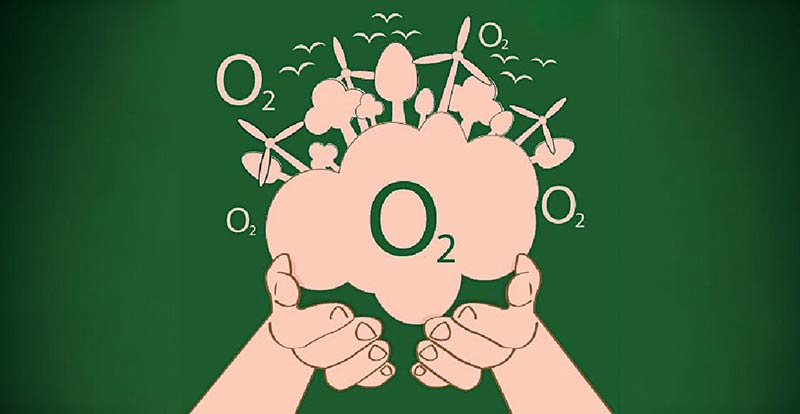
by Dr. Ranil Senanayake
The Oxygen that is present in the air that we breathe is the birth right of every organism that lives on this planet. It is free for everyone. However, the action of some to take out more than their share, without replacement, has created a condition, where the Global Commons of air is being rapidly degraded,
The most critical component of air is Oxygen. It surrounds us, filling our lungs with every breath we take. It is the invisible gift of nature that we take for granted. But this essential resource—the very foundation of life— is being constricted, because the volume of trees, plants, and photosynthetic organisms that produce oxygen is being lost across the planet. Further, there is no initiative for this generation capacity to be increased as a matter of urgency. exploited at present? Why couldn’t increasing the generation capacity of Oxygen have economic value? Could those who benefit most from using the resources of the Global Commons be required to contribute to its maintenance? This is the idea behind the Oxygen Economy, a bold and transformative concept that seeks to address environmental and social challenges in a way that is fair, sustainable, and forward-thinking beyond GDP value which measures the success of our societies today.
What Is the Oxygen Economy?
The Oxygen Economy is a financial framework, that recognises the value of the global stocks of Oxygen within the commons and records the deposition and consumption through economic activity.
The Oxygen Economy is a principled framework that recognises the stocks, transactions and deposits of Oxygen into the Global commons and assigns value to stocks from privately contracted production units, it stems from a growing recognition that Oxygen is a declining resource with an easy replenishment response.
Oxygen, considered a “free” resource. It is not. Much like oil and coal it is a ‘fossil’ resource that has been a part of the atmosphere for millions of years. It has been slowly declining, but is ‘topped up’ by a service provided by the earth’s ecosystems —particularly trees, plants, and other photosynthetic organisms. These organisms create molecular Oxygen through the process of photosynthesis, supporting life on earth and maintaining the balance of our atmosphere.
At its core, the Oxygen Economy aims to ensure that those who produce contracted and monitored oxygen, be it towns, farmlands, rural or forested lands, are fairly compensated for their efforts. It also holds industries and private-sector entities that benefit from oxygen consumption accountable in maintaining the sustainability of this resource.
What is the urgency to address oxygen as a depleting resource?
Other than the obvious fact of falling global stocks, the need of an Oxygen Economy arises from the urgency of addressing two critical challenges facing humanity: environmental degradation and economic inequality. Placing value on Oxygen production could effectively provide an effective response to both. For decades, efforts to combat climate change have focused primarily on carbon
sequestration. While important, the focus on Carbon sequestration often overlooks other vital ecosystem services, including oxygen production that can contribute towards a growing wealth paradigm. Oxygen, like water and food, is essential for life. However, unlike other resources, it has largely been treated as infinite and freely available, which it is not. In reality, the supply of Oxygen to the atmosphere is decreasing due to deforestation, while the consumption of Oxygen by space exploration, industrial production, war and transport are increasing. Today Oxygen levels have dropped by approximately 2%, raising concerns about the long- term sustainability of this critical resource.
How the Oxygen Economy works
The Oxygen Economy operates on the principles of private property being valued using financial tools such as valuation guarantees, stakeholder contracts and Insurances to monetise contractually produced oxygen as a financial product. This involves three key components:
1. Valuation guarantee:
Assigning an economic value to the oxygen produced by contracted and registered units in identified geographical areas of production is based on the researched, monitored and validated measurements of oxygen generation by trees / plants or photosynthetic organisms such as Cyanobacteria.
2. Deposition guarantee:
Issuance of certificates of completion and deposit of Oxygen into the global Commons Stakeholder Contracts and Compensation: Establishing formal agreements between oxygen consumers (e. g., corporations / Space exploration companies) and contracted oxygen producers (e.g., farmers, Local communities)
3. Policy and regulation: Introducing replicable legal frameworks at a regional scale to enforce accountability and prevent the uncontrolled exploitation of global oxygen resources.
Lessons from Sri Lanka
One country that is already exploring the potential of the Oxygen Economy is in the bioregional area of Sri Lanka. Known for its rich biodiversity and commitment to environmental stewardship, Sri Lanka has implemented initiatives that align with the principles of the Oxygen Economy. In one notable project, women from farming communities established and nurtured trees using contracts that measured and validated payments for photosynthetic biomass on an annually recurring basis for a period of four years. The stakeholders earning substantive income from this project were sensitised to the emerging Oxygen Economy while contributing their obligations to global environmental resilience. Over three years, these participants generated thousands of litres of oxygen, demonstrating that the concept is not only viable but also impactful.
Scaling the Oxygen Economy globally:
While Sri Lanka’s efforts are a promising start, the true potential of the Oxygen Economy
lies in its ability to scale globally. Imagine a world where farmers are compensated for the establishment of trees, where rural and even urban greenery projects could receive funding to expand their impact for this paradigm of business. Such a system would not only help combat climate change but also address economic inequalities of the current GDP paradigm, by together contracting the Oxygen economic asset tool to those who sustain the planet’s life-support systems.
Addressing potential challenges
Like any transformative idea, the Oxygen Economy faces potential challenges. Critics may argue that assigning a monetary value to Oxygen risks commodifying a natural resource that should remain freely accessible. Others may question the feasibility of measuring, validating and regulating oxygen production on a global scale. These concerns can be addressed by emphasising the ethical principles behind the Oxygen Economy. The goal is not to charge people for breathing but to ensure that those who contribute to its sustainability profit from financial contracts for Oxygen production. Additionally, such transparent systems for measuring and validating oxygen production will be crucial for building trust and ensuring fairness towards the vision of accounting for intergenerational wealth beyond the GDP framework that exists.
A vision for the future
The Oxygen Economy represents a paradigm shift in how we think about our relationship with the planet. It challenges us to move beyond the notion of nature as an infinite resource and to recognise the boundaries of our Global Commons. The true value of planet Earth is as an ecosystem that sustains life for all biota. By aligning economic practices with environmental stewardship, the Oxygen Economy offers a path towards a more equitable and sustainable future. It supports the foundations of intergenerational wealth that will be reflected in our contributions to the cycling atmospheric gasses of our Global Commons.
Imagine a world where the air we breathe is not taken for granted but is cherished and protected. Where farmers, communities, and ecosystems are rewarded for their contributions to the planet’s well-being. Where industries operate with a framework of accountability to prioritise the health of our shared environment. This is the vision of the Oxygen Economy—a vision that is within our reach if we act together, with urgency and determination, to lay well informed, solid foundations.
Features
Two sides to a coin; each mourn threat; no threat, no budget blues

 The coin Cassandra starts her Friday Cry with the recent film Rani. Parroting what her friends said on seeing the film, Cass in her Cry just prior to this wrote: “It has been reviewed as outstanding; raved over by many; and already grossed the highest amount in SL cinema history – Rs 100 million from date of release January 30 to February 14. This last: testimony to its popular appeal and acceptance as an outstanding cinema achievement.
The coin Cassandra starts her Friday Cry with the recent film Rani. Parroting what her friends said on seeing the film, Cass in her Cry just prior to this wrote: “It has been reviewed as outstanding; raved over by many; and already grossed the highest amount in SL cinema history – Rs 100 million from date of release January 30 to February 14. This last: testimony to its popular appeal and acceptance as an outstanding cinema achievement.
” Cass admitted she had not seen the film. She now realises her reluctance to jostle in the crowd in one of many cinemas retelling the murder of Richard de Zoysa and traumatic mourning of his mother, Manorani, was because there grew in her a distaste after watching short previews on YouTube of parts of the film. Most centered on is Swarna Mallawarachchi, starring as Manorani, downing alcohol and smoking cigarette after cigarette. Director Asoka Handagama was sensationlising the more dramatic incidents of the tragedy. That was to please the crowd.
We Sri Lankans, or many, have absolutely no tight upper lip. Most funerals of yesteryear and many rural ones still have writhing moaning and groaning and appeals to the dead to smile one more time, say a word, rise up. These loud gasped cries in between sobbing sent Cass wickedly into silent giggles. She thought: what if the dead obliged with even one request. Worst, if he rose up and sat in his coffin. The first to run away would be the callers! People love wallowing in sniffles of sorrow. Audiences much prefer fictionalised retelling of events to documentaries about them. Handagama does style his film as fictionalised history but he definitely is guilty of sensationalism. Cass’ gut feelings have been given words in a criticism on Face Book which was shared with Cass by a nephew.
The sent around message is titled: Misconceived, Misinterpreted, Miscast and a Big Mistake. That tells it all. However there follows an incisive critique of the film Rani by one of Richard’s friends who knew Manorani well and how she was after her son’s death. He signs himself, but Cass will not quote the name here since there is much truth, lies and even hidden agendas in what is posted on social media.
He writes: “Badly acted, badly directed and badly researched … A clear example of character assassination via a deliberate misuse of artistic license! … I want to state my opinion about two people that many of us loved, respected and knew intimately.” He then goes on to point out mistakes and exaggerations: Manorani was never even bordering on alcoholism and hardly ever smoked. And when she did, socially or to dim her sorrow, she did it elegantly. A Man Friday commented: they should have taught Swarna how to hold a cigarette and smoke it as it should be smoked. Hence my contention, every coin, even a box office success, has two sides to it, two diverse criticisms and in-betweens. Decision: Cass will not queue for a cinema ticket.
Each morn
Phoned a US living friend who was recovering from a harsh winter’s gift to her – severe flu. She said the flu was leaving her but depression and distraught-ness about hers and the US’s future were threatening to drown her in emotional turmoil much worse than the worst cough ‘n cold.
I knew the reason – Trump’s trumpets of new opinions, threats, enactments et al. She dreaded getting up each morning wondering what new calamity was to descend on the American people and by influence, spreading to the world. Her son has forbidden TV news watching and reading the newspapers which she says are so opposed to media treatment of the Prez.
I could very well sympathise with her. We in Sri Lanka suffered bouts of such threatened discomfort, nay calamitous warnings and sheer dread. My remembering mind went to Shakespeare in his tragic play Macbeth. Macduff’s description of Scotland under the reign of Macbeth to Malcolm, son and heir of murdered Duncan now sheltered in England, goes thus: “Each new morn/ New widows howl, new orphans cry/ new sorrows strike heaven on the face that it resounds.”
Cass does not know about you but dread lurked in her heart and mind when the JVP 1989 insurrection took place – for her teenage son. The LTTE and suicide bombs caused utter destruction of life, limb and infrastructure. Families who had travelled together now travelled to schools and workplaces separately since no bus or train was safe. Nor were the privately owned cars. Then came two tyrant Presidents with sudden deaths of prominent persons and media personnel like Richard and Lasantha and many others.
Blatant robbing of our money had us gasping helplessly. Riff raff rose in power and lorded, one such tying a man to a stake for not attending a meeting. Then rode to power on popular vote another brother in the newly created powerful dynasty. Word of mouth minus stroke of pen had orders given out to be promptly executed. White vans which plied the streets were reduced but worse happened.
One order and the rice fields had no grain, fruits dried on trees, forex earning luscious two leaves and a bud withered and could not be plucked. Bankruptcy resulted. But we had a ‘shipless’ harbour which had to be mortgaged for a song to the Chinese; a plane-less airport sounding death to elephants and peafowl; and a gaudy tower to gaze on or commit suicide from. A gathering of people on Galle Face Green righted things.
Then came into power a party that had two men and a woman in Parliament which yielded a true Sri Lankan with country first and last in mind, as President. Followed a sharp victory for the coalition of parties led by the hopefully reformed JVP so that three seats became almost two thirds of all seats in Parliament and a woman as Prime Minister. She had no connection to previous Heads unlike a former woman PM and Prez. The first woman PM rode to power weeping for her murdered husband; the younger very promising Prez because she was daughter of two Heads of Sri Lanka. But there was, even under their reign, mutterings and difficulties.
Truth be told, we sleep better at night and wake up with no dread in our innards. We rise to shine (if possible, in the heat of Feb) knowing people are working and corruption is not wrought by those in power. Thank goodness and our sensible voters for this peace we savour.
2025 Budget
Cass’ title has the phrase ‘no budget blues’. Looks like it is generally correct. Of course, the Opposition is criticising Finance Minister AKD’s presented budget. Cass is no economist, not by a long chalk, but she was glad to see that expenditure on health and education were substantial. We had a time when the armed forces were allocated more than education and health combined. Much has been looked into: including pregnant women and the Jaffna library among a host of mentioned amenities. We have no need to pessimistically await a Gazette Extraordinary stating negative segments of the future year’s financial plan. Thanks be!
Gaza and Ukraine are worse in position and the world is awry. But Sri Lanka is in a phase where Kuveni’s curse is stilled and people are considering themselves Sri Lankans, uniting to re-make Sri Lanka Clean as it was before selfish corrupt politicians took over.
Features
As Africa toes Chinese line …
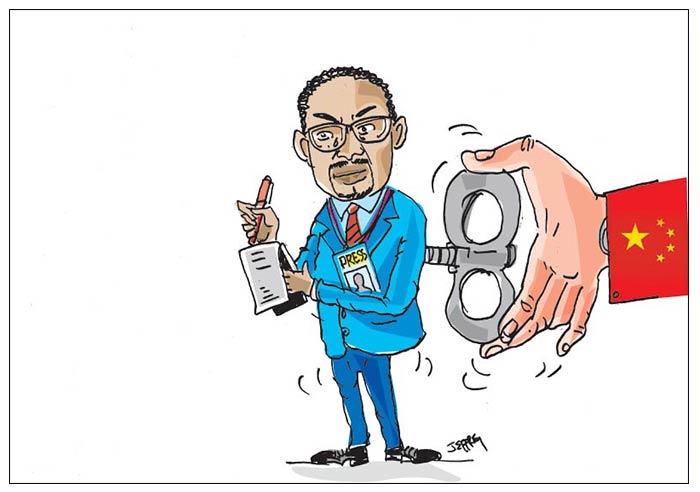
Mitchell Gallagher
Every year, China’s minister of foreign affairs embarks on what has now become a customary odyssey across Africa. The tradition began in the late 1980s and sees Beijing’s top diplomat visit several African nations to reaffirm ties. The most recent visit, by Foreign Minister Wang Yi, took place in mid-January 2025 and included stops in Namibia, the Republic of the Congo, Chad and Nigeria.
For over two decades, China’s burgeoning influence in Africa was symbolised by grand displays of infrastructural might. From Nairobi’s gleaming towers to expansive ports dotting the continent’s shorelines, China’s investments on the continent have surged, reaching over $700 billion by 2023 under the Belt and Road Initiative, China’s massive global infrastructure development strategy.
But in recent years, Beijing has sought to expand beyond roads and skyscrapers and has made a play for the hearts and minds of African people. With a deft mix of persuasion, power and money, Beijing has turned to African media as a potential conduit for its geopolitical ambitions. Partnering with local outlets and journalist-training initiatives, China has expanded China’s media footprint in Africa. Its purpose? To change perceptions and anchor the idea of Beijing as a provider of resources and assistance and a model for development and governance. The ploy appears to be paying dividends, with evidence of sections of the media giving favourable coverage to China.
But as someone researching the reach of China’s influence overseas, I am beginning to see a nascent backlash against pro-Beijing reporting in countries across the continent. China’s approach to Africa rests mainly on its use of “soft power,” manifested through things like the media and cultural programmes. Beijing presents this as “win-win cooperation”—a quintessential Chinese diplomatic phrase mixing collaboration with cultural diplomacy. Key to China’s media approach in Africa are two institutions: The China Global Television Network (CGTN) Africa and Xinhua News Agency.
CGTN Africa, which was set up in 2012, offers a Chinese perspective on African news. The network produces content in multiple languages, including English, French and Swahili, and its coverage routinely portrays Beijing as a constructive partner, reporting on infrastructure projects, trade agreements and cultural initiatives. Moreover, Xinhua News Agency, China’s state news agency, now boasts 37 bureaus on the continent. By contrast, Western media presence in Africa remains comparatively limited.
The BBC, long embedded due to the United Kingdom’s colonial legacy, still maintains a large footprint among foreign outlets, but its influence is largely historical rather than expanding. And as Western media influence in Africa has plateaued, China’s state-backed media has grown exponentially. This expansion is especially evident in the digital domain. On Facebook, for example, CGTN Africa commands a staggering 4.5 million followers, vastly outpacing CNN Africa, which has 1.2 million—a stark indicator of China’s growing soft power reach. China’s zero-tariff trade policy with 33 African countries showcases how it uses economic policies to mould perceptions.
And state-backed media outlets like CGTN Africa and Xinhua are central to highlighting such projects and pushing an image of China as a benevolent partner. Stories of an “all-weather” or steadfast China-Africa partnership are broadcast widely and the coverage frequently depicts the grand nature of Chinese infrastructure projects. Amid this glowing coverage, the labour disputes, environmental devastation or debt traps associated with some Chinese-built infrastructure are less likely to make headlines. Questions of media veracity notwithstanding, China’s strategy is bearing fruit.
A Gallup poll from April 2024 showed China’s approval ratings climbing in Africa as US ratings dipped. Afrobarometer, a pan-African research organisation, further reports that public opinion of China in many African countries is positively glowing, an apparent validation of China’s discourse engineering. Further, studies have shown that pro-Beijing media influences perceptions. A 2023 survey of Zimbabweans found that those who were exposed to Chinese media were more likely to have a positive view of Beijing’s economic activities in the country. The effectiveness of China’s media strategy becomes especially apparent in the integration of local media.
Through content-sharing agreements, African outlets have disseminated Beijing’s editorial line and stories from Chinese state media, often without the due diligence of journalistic scepticism. Meanwhile, StarTimes, a Chinese media company, delivers a steady stream of curated depictions of translated Chinese movies, TV shows and documentaries across 30 countries in Africa. But China is not merely pushing its viewpoint through African channels. It’s also taking a lead role in training African journalists, thousands of whom have been lured by all-expenses-paid trips to China under the guise of “professional development.” On such junkets, they receive training that critics say obscures the distinction between skill-building and propaganda, presenting them with perspectives conforming to Beijing’s line.
Ethiopia exemplifies how China’s infrastructure investments and media influence have fostered a largely favourable perception of Beijing. State media outlets, often staffed by journalists trained in Chinese-run programmes, consistently frame China’s role as one of selfless partnership. Coverage of projects like the Addis AbabaDjibouti railway line highlights the benefits, while omitting reports on the substandard labour conditions tied to such projects—an approach reflective of Ethiopia’s media landscape, where state-run outlets prioritise economic development narratives and rely heavily on Xinhua as a primary news source. In Angola, Chinese oil companies extract considerable resources and channel billions into infrastructure projects.
The local media, again regularly staffed by journalists who have accepted invitations to visit China, often portray Sino-Angolan relations in glowing terms. Allegations of corruption, the displacement of local communities and environmental degradation are relegated to side notes in the name of common development. Despite all of the Chinese influence, media perspectives in Africa are far from uniformly pro-Beijing. In Kenya, voices of dissent are beginning to rise and media professionals immune to Beijing’s allure are probing the true costs of Chinese financial undertakings. In South Africa, media watchdogs are sounding alarms, pointing to a gradual attrition of press freedoms that come packaged with promises of growth and prosperity.
In Ghana, anxiety about Chinese media influence permeates more than the journalism sector, as officials have raised concerns about the implications of Chinese media cooperation agreements. Wariness in Ghana became especially apparent when local journalists started reporting that Chinese-produced content was being prioritised over domestic stories in state media.
Beneath the surface of China’s well publicised projects and media offerings, and the African countries or organisations that embrace Beijing’s line, a significant countervailing force exists that challenges uncritical representations and pursues rigorous journalism. Yet as CGTN Africa and Xinhua become entrenched in African media ecosystems, a pertinent question comes to the forefront: Will Africa’s journalists and press be able to uphold their impartiality and retain intellectual independence? As China continues to make strategic inroads in Africa, it’s a fair question.
(The writer is a PhD candidate of political science at Wayne State University, US. This article was published on www.theconversation.com)
-

 Sports6 days ago
Sports6 days agoRemarkable turnaround for Sri Lanka’s ODI team
-

 Features6 days ago
Features6 days agoScammed and Stranded: The Dark Side of Sri Lanka’s Migration Industry
-

 Business6 days ago
Business6 days agoUN Global Compact Network Sri Lanka: Empowering Businesses to Lead Sustainability in 2025 & Beyond
-
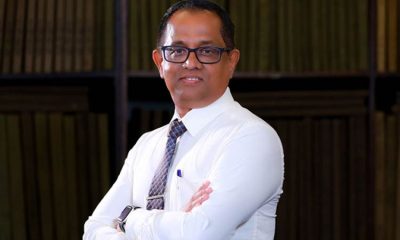
 News7 days ago
News7 days agoSpeaker agrees to probe allegations of ‘unethical funding’ by USAID
-
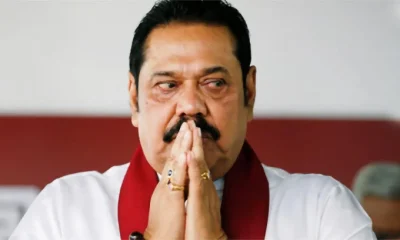
 Features5 days ago
Features5 days agoDon’t betray baiyas who voted you into power for lack of better alternative: a helpful warning to NPP – II
-
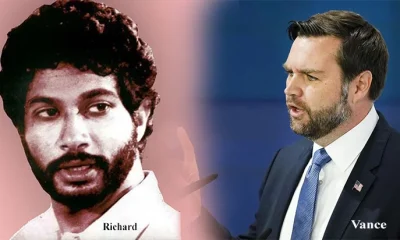
 Features5 days ago
Features5 days agoTwo films and comments
-

 News3 days ago
News3 days agoCommercial High Court orders AASSL to pay Rs 176 mn for unilateral termination of contract
-

 Sports2 days ago
Sports2 days agoSri Lanka face Australia in Masters World Cup semi-final today











